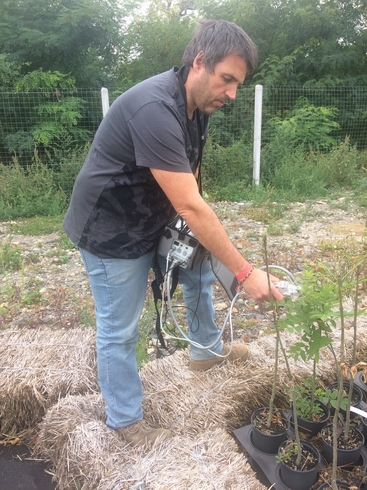PAM2500 chlorophyll meter
We continue the demonstration of the instruments used by our research groups with the introduction of the device which detects cellular processes that are not visible to the eye: the Portable Chlorophyll Fluorometer PAM 2500 (pulse-amplitude-modulated). The fluorometer measures fluorescence (short emission of light caused by lighting for example. Similarly to the earlier demonstrated SPAD device, the instrument functions as a tachometer but it can measure more parameters. It is used to measure qualitative and quantitative parameters of photosynthesis. Photosynthesis is the process used by plants to harness energy from sunlight with the use of water and carbon-dioxide during which high energy sugars are produced while oxygen is released. The PAM 2500 is a relatively lightweight mobile portable device that can be hung around the neck so it is perfect on the field. The instrument consists of a measuring unit that can be clipped onto leafs which connects to a receiver through a cable. The receiver connects to a tablet which displays the measurement values. The device clipped onto the leaf employs blue (455nm), red (630nm) and infrared (750 nm) light at a given frequency and the instrument detects the reflection or fluorescence. The measurement value shows the state of the light phase of the photosynthesis (photosynthesis consists of light and dark phases). Under optimal circumstances we need to have the reference and data on the same plant species in order to use it as a benchmark. Often we use this instrument in conjunction with other SPAD devices we demonstrated earlier. It can be used in several cases for example when measuring effects of draught, heat, and salt stress on plants.
